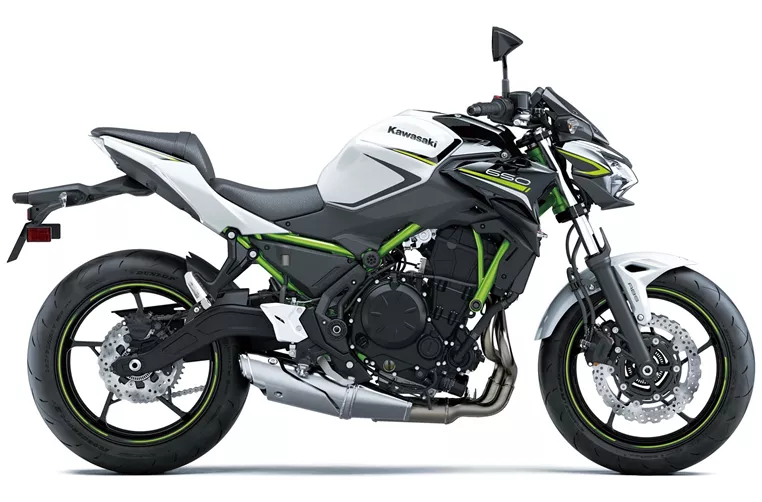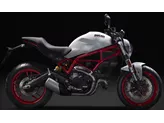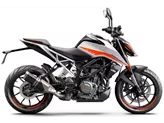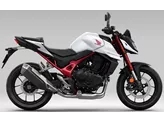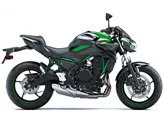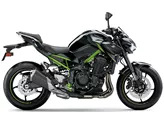Kawasaki Z650 2020 vs. Kawasaki Z 300 2016
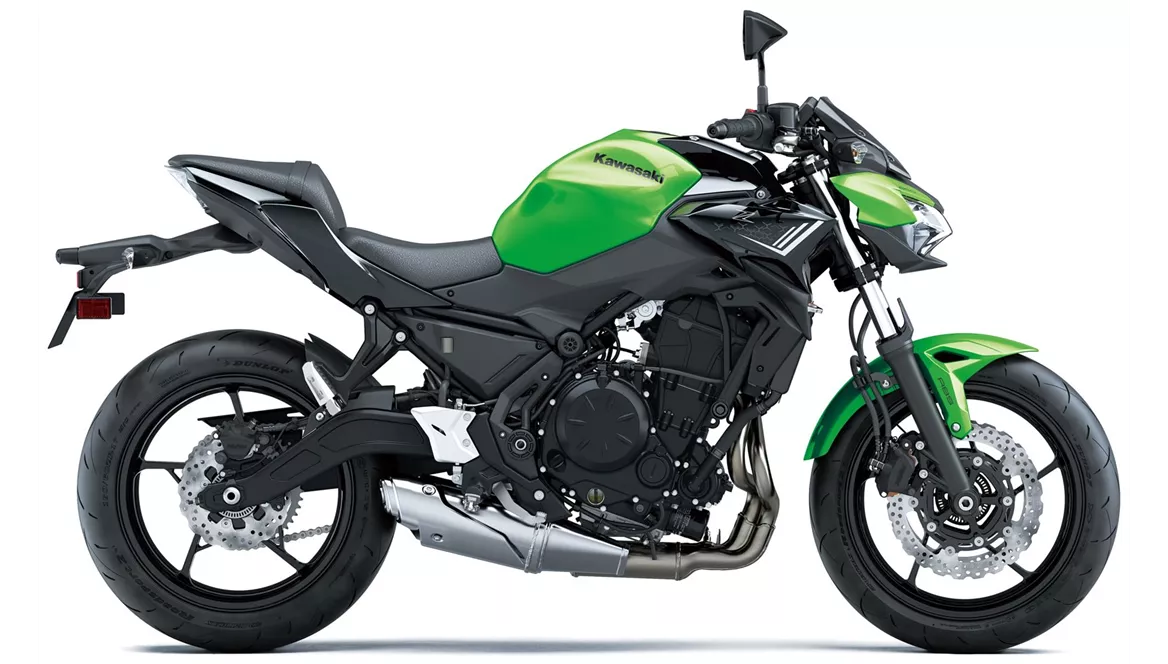
Kawasaki Z650 2020

Kawasaki Z 300 2016
Overview - Kawasaki Z650 2020 vs Kawasaki Z 300 2016
When comparing the Kawasaki Z650 2020 and the Kawasaki Z 300 2016, several differences and similarities can be noted.
Starting with the engine and drive train, both models have an in-line engine with liquid cooling. However, the Z650 has a more powerful engine with 68.2 HP compared to the Z 300's 39 HP. The Z650 also has a higher torque of 65.7 Nm, providing better acceleration and overall performance. In terms of displacement, the Z650 has a larger engine with 649ccm compared to the Z 300's 296ccm.
Moving on to the chassis, both models feature a steel frame, providing stability and durability. The Z650 has a slightly longer wheelbase of 1410mm compared to the Z 300's 1405mm. This difference may result in slightly different handling characteristics.
When it comes to brakes, both models have double piston front brakes with petal technology. This ensures reliable and efficient braking performance.
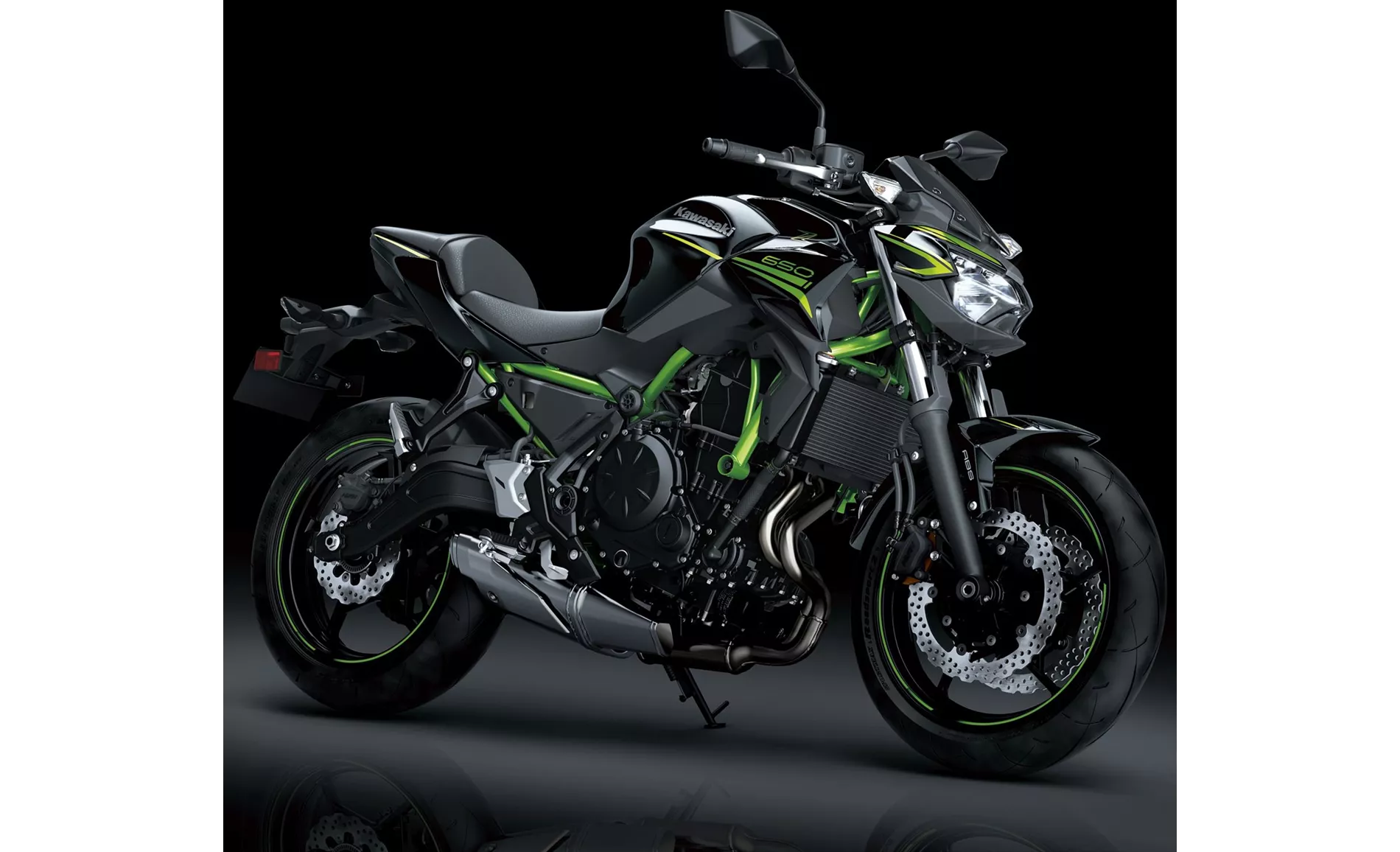
Kawasaki Z650 2020
In terms of dimensions and weights, the Z650 has a front tire width of 120mm, while the Z 300 has a slightly narrower front tire width of 110mm. Both models have a 17-inch front tire diameter. The rear tire width of the Z650 is 160mm, whereas the Z 300 has a slightly narrower rear tire width of 140mm. Both models have a 17-inch rear tire diameter.
The seat height of the Z650 is slightly higher at 790mm compared to the Z 300's 785mm. This may result in a more comfortable riding position for taller riders on the Z650.
In terms of weight, the Z650 has a higher kerb weight of 185kg (187.1kg with ABS) compared to the Z 300's 168kg (170kg with ABS). This may affect the maneuverability and agility of the bike.
The fuel tank capacity of the Z650 is 15 liters, while the Z 300 has a larger fuel tank capacity of 17 liters. This may result in a slightly longer range for the Z 300 before refueling is required.
Now, let's discuss the strengths and weaknesses of each model. The Z650 2020 has several strengths, including a powerful two-cylinder engine, aggressive intake noise, compact dimensions, a low seat height, and a stable chassis. It also features a TFT display with connectivity, allowing riders to easily access information and connect their devices. Additionally, the Z650 has a grown-up look, appealing to riders who prefer a more mature aesthetic.

Kawasaki Z 300 2016
On the other hand, the Z 300 2016 has its own strengths. It features an adult look with high-quality finish, providing a sense of sophistication. The high-revving engine offers a thrilling riding experience, and the comfortable seating position ensures rider comfort even on longer rides. The stable brake provides reliable stopping power, and the easy-to-read, complete cockpit allows riders to easily monitor their bike's performance. Furthermore, the Z 300 has a low fuel consumption, making it an economical choice for riders concerned about fuel efficiency.
However, both models have their weaknesses as well. The Z650 has been noted to have a front brake pressure point issue, which may affect the braking feel for some riders. It may also be uncomfortable for taller riders due to its compact dimensions. Additionally, the Rideology App, while providing connectivity, may not be as sophisticated as some riders would prefer.
On the other hand, the Z 300 has a very unobtrusive sound, which may not appeal to riders looking for a more aggressive exhaust note. The engine only starts when idling, which may be a minor inconvenience for some riders.
In conclusion, the Kawasaki Z650 2020 and the Kawasaki Z 300 2016 have their own unique features and characteristics. The Z650 offers a more powerful engine, a more grown-up look, and a range of modern features. On the other hand, the Z 300 provides a more economical option with a high-revving engine and a comfortable seating position. Ultimately, the choice between the two models will depend on the rider's preferences and priorities.
Technical Specifications Kawasaki Z650 2020 compared to Kawasaki Z 300 2016
Pros and Cons in comparison
Pros and Cons in comparison
Kawasaki Z650 2020

It's simply marvellous what Kawasaki has put together in a complete package with the new Z650. The technical components may not knock your socks off individually, but in combination they make for a pleasantly neutral motorbike that everyone will enjoy. No bitchy idiosyncrasies - simply a naked bike that works really well on winding country roads. Of course, the TFT display, which we don't find in the competition at the moment, is a plus, as is the grown-up look, which is strongly oriented towards the larger Z models. Only the pressure point of the front brake could have been more clearly defined - but you can't have everything in this price range.
Kawasaki Z 300 2016

The cool design of the Kawasaki Z300, which is extremely similar to that of its big sister Z800, makes it a very grown-up-looking motorbike. The stable braking system and the easy-to-read cockpit with an analogue rev counter and all the necessary features fit in very well with this image. Thanks to the 170 kg ready-to-ride weight, the bike is extremely easy to handle and playful. The engine only reveals its potential in the upper rev range, but revs up willingly and makes you want to ride in a sporty manner. Only the comfort-oriented chassis cannot quite cope with radically sporty demands - but this is quite legitimate and understandable for an entry-level motorbike.
Price Comparison Avarage Market Price Kawasaki Z650 vs Kawasaki Z 300
There are a few key differences between a Kawasaki Z650 2020 and a Kawasaki Z 300 2016. There are the same number of bikes of both models available on the 1000PS.de marketplace, specifically 21. It takes less time to sell a Kawasaki Z650 with 80 days compared to 88 days for a Kawasaki Z 300. Since model year 2017 1000PS.de editors have written 31 reviews for the Kawasaki Z650 and 5 reviews for the Kawasaki Z 300 since model year 2015. The first review for the Kawasaki Z650 was published on 08/11/2016 and now has more than 25,000 views. This compares to more than 59,800 views for the first review on Kawasaki Z 300 published on 04/11/2014.
